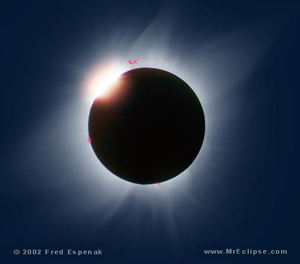Astronomy in China has a very long history. Oracle bones from the Shang Dynasty (2nd millennium BC) record eclipses and novae. Detailed records of astronomical observations were kept from about the 6th century BC until the introduction of Western astronomy and the telescope in the 16th century. The practice of astronomy in China was fundamentally changed by extended contact with Western astronomy. Today, China continues to be active in astronomy, with many observatories and its own space program.
Early history
One of the main functions was for the purpose of timekeeping. The Chinese used a lunisolar calendar , but because the cycles of the Sun and the Moon are different, intercalation had to be done.
The Chinese calendar was considered to be symbol of a dynasty. As dynasties would rise and fall, astronomers and astrologers of each period would often prepare a new calendar to be made, with observations for that purpose.
Astrological divination was also an important part of astronomy. Astronomers took careful note of "guest stars" which suddenly appeared among the fixed stars. The supernova that created the Crab Nebula in 1054 is an example of a guest star observed by Chinese astronomers, recorded also by the Arabs, although it was not recorded by their European contemporaries. Ancient astronomical records of phenomena like supernovae and comets are sometimes used in modern astronomical studies.
Purpose of astronomical observations in the past
Chinese constellations
The divisions of the sky began with the Northern Dipper and the 28 mansions.
In early 1980s, a tomb was found at Xi Shui Po (西水坡) in Pu Yang, Henan Province. There were some clamshells and bones forming the images of the Azure Dragon, the White Tiger and the Northern Dipper. It is believed that the tomb belongs to the Neolithic Age, about 6,000 years ago.
Star names relating to the 28 lunar mansions were found on oracle bones dating back to the Wuding Period, about 3,200 years ago.
In 1978, a lacquer box was excavated from the tomb of Zeng Hou Yin in Suixian, Hubei Province. Names of the 28 lunar missions were found on the cover of the box, proofing that the use of this classification system was made before 433 BC.
As lunar mansions have such an ancient origin, the meaning of most of their names have become obscure. Even worse, name of each lunar mansion consists of only one Chinese word, and the meaning of which could vary at different times in history. So the meaning of the names are sill under discussion.
Besides 28 lunar mansions, most constellations are based on the works of Shi Shen-fu and Gan De, who were astrologists during the period of Warring States (481 BC - 221 BC) in China.
In the late period of the Ming Dynasty, the agricultural scientist and mathematician Xu Guangqi (1562 - 1633 AD) introduced 23 additional constellations which are near to the Celestial South Pole, which are based on star catalogues from the West (see Matteo Ricci).
History of Chinese constellations
Unlike the West, where the starry sky is a pantheon of Greek legendary hero and mystic creatures, the Chinese treat the heavens as a miniature of their earthly world, a reflection of their feudal society.
 Classification
ClassificationStar catalogues and Maps
In the 4th century BC the two Chinese astronomers responsible for the earliest information going into the star catalogues are Shi Shen, Gan De of the Warring States period. The Chinese classic text "Star Manual of Master Wu Xian" (巫咸星經), and its authorship is still in dispute because it mentioned names of Twelve Countries, which did not exist in the Shang Dynasty, the era of which it was supposed to have been written. Moreover, it was customary in the past for the Chinese to forge works of notable scholars, as this could lead to a possible explanation for the inconsistencies found. Wu Xian is generally mentioned as the astronomer who lived many years before Gan and Shi.
The Han Dynasty astronomer and inventor Zhang Heng (78 - 139 AD) not only catalogued some 2500 different stars, but also recognized over 100 different constellations. Zhang Heng also published his work Ling Xian, a summary of different astronomical theories in China at the time. In subsequent period of the Three Kingdoms (220 - 280 AD), Chen Zhuo (陳卓) combined the work of his predecessors, forming another star catalogue. This time 283 constellations and 1464 stars were listed. The astronomer Guo Shoujin of the Yuan Dynasty (1279 - 1368 AD) created a new catalogue which was believed to contain thousands of stars. Unfortunately, many of documents at that period were destroyed, including that of Shoujin. Imperial Astronomical Instruments (儀象考成) published in 1757 containing 3083 stars exactly.
The Greek Hipparchus later created the first star catalogue for the Western world during the 2nd century BC.
Star catalogues
No comments:
Post a Comment